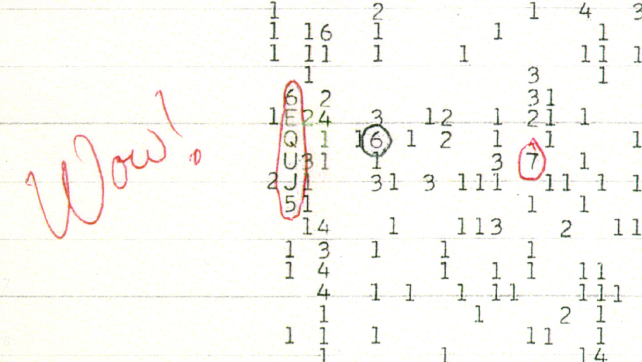The search for alien life has always been hampered by the huge racket that Earth generates, rendering it difficult to tease out alien signals from all the local noise.
But a new method for recognizing radio signals traveling through interstellar space could narrow the search considerably.
"I think it's one of the biggest advances in radio SETI in a long time," says astrophysicist Andrew Siemion, a co-author of a paper describing the technique and director of the Berkeley Search for Extraterrestrial Intelligence (SETI) Research Center.
Radio waves emitted by an alien civilization living on the far side of the Milky Way would have to travel 100,000 light-years through interstellar space to reach Earth.
These radio waves would be scattered as they encountered the turbulent, ionized plasma of interstellar space.
This kind of disturbance is unique to interstellar space travel and has been previously observed among rapidly rotating stars called pulsars.
This scattering produces a distinctive 'twinkle' called 'diffractive scintillation' where the radio waves start to interfere with each other.
Astrophysics PhD candidate Bryan Brzycki, along with Siemon and his colleagues at SETI's Breakthrough Listen project, developed a program that can pick out radio waves with this interstellar twinkle from the 'proverbial haystack'.
"It's the first time where we have a technique that, if we just have one signal, potentially could allow us to intrinsically differentiate it from radio frequency interference," says Siemion.
SETI has scoured the skies for decades, looking for radio waves that could only be produced by alien technology.
Occasionally, a strange frequency will spike amongst the white noise of the universe.
At those moments, it is like the researchers have tuned a radio from a frequency with static to a frequency with music.
Within a very narrow range of frequencies is a clear, continuous signal, much like what you would see if you graphed the incoming signals from an FM radio or the Voyager spacecraft.
Natural phenomena like lightning, the Sun, pulsars, and supernovas can't produce these tight signals. They rumble across the sky at much broader frequencies.
But while there's every reason to be suspicious of these signals, most of these are blips created by human interference, such as from satellites, cell phones, Wi-Fi, or microwaves.
For instance, the origin of SETI's famous 72-second 'Wow!' signal detected in 1977 by a radio telescope in Ohio is still debated, although some think it came from a comet. It hasn't been detected since.

To be sure they are picking up alien signals and not Earth chatter, SETI will search the skies to see where the signal is coming from.
If it comes from several directions, it's probably local interference from humans. If it's coming from a single point in the sky – from a single star – it could be a message from aliens.
However, in answering the existential question of whether we are alone in the universe, 'maybe' doesn't cut it. We need to be quite sure.
If there are aliens out there, they would likely be using radio waves for communication as they are efficient to produce, and they can travel relatively unimpeded through the atmosphere and interstellar space, the researchers propose.
In fact, an advanced alien civilization would know that "scintillation is itself a message", the researchers write.
Even if none of the original information in the narrow band radio signal remains intact after a trip through interstellar space, the team concludes, "the mere presence of scintillation would communicate the message: 'we are here'."
This paper was published in The Astrophysical Journal.
